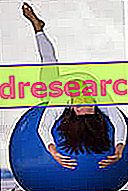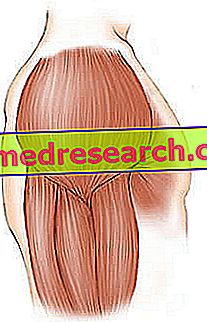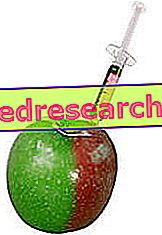By Dr. Laura Asinari
The spine must ensure essential functions: being both solid and mobile at the same time.
The whole set (bones, intervertebral discs, ligaments, supporting musculature) must work in a perfectly coordinated manner and this is possible through the Postural Tonic System.
The moment an element of this system is altered, an imbalance is installed.
Postural imbalance generates anomalous tensions on the elements that make up the column and these tensions, in the long run, determine the appearance of pain, stiffness and participate in the onset of arthrosis.

Going back to our times, back pain could be considered the evil of the century, given its almost epidemic spread: it represents one of the most frequent causes of absence from work, every year twenty-six million working days are lost because of it; from an American statistic 93% of individuals have suffered, suffer or suffer from back pain; 30% of children aged seven to seventeen complain of back pain; the cost of care and of losses in terms of production amounts to billions of dollars a year, in France it represents the third expenditure in order of importance of Health.
The figures are eloquent: back pain poisons the lives of people who are sedentary or sports, normal life is weakened, the usual activities are compromised and often you are forced to resort to drugs to relieve pain.
The causes of back pain can be different, as are the types of back pain.
The latest studies in the field of neuroscience show that postural regulation does not depend exclusively on the inner ear, as was thought for a long time, but above all from other receptors of the system and in the first place: the foot and the eye.
Other receptors can intervene in the disturbance of the posture, ie the skin (the scars), the stomatognathic apparatus (teeth / malocclusions), the muscles, the joints and finally the psychological factor which is by no means negligible.
From the moment in which the Postural Tonic System is unregulated due to abnormal information arriving from one of its receptors, the imbalance appears and with this a series of disturbances.
This system is therefore capable of functioning in its imbalance, but it is incapable of correcting itself; this is why so many people have a postural imbalance (more than 80%) and can, in the long run, have pains.
There are many diseases that are sustained by the imbalance of the Postural Tonic System, such as:
vertebral and rheumatic pain, vertebral blocks, vertebral component pain (sciatica, crural pain, scapulalgia ...)
deformations of the vertebral column (scoliosis, scoliotic attitude, hypercyphosis ...) and limbs (axis defects, foot deformations)
static-component pains (hip, knee, foot ..)
herniated discs or more generally all disc pathologies do not result from infection
various pathologies of the sportsman, even of the occasional sportsman (cramps, tendinitis, sprains ...)
All these are the reasons that lead an individual to consult their doctor. If painkillers, anti-inflammatories can have an effect on pain and inflammation, they have no effect on the mechanical component of pain, as well as fashionable therapies such as acupuncture, homeopathy, vertebral manipulations, mesotherapy etc ... they are often a very effective complement, but none of them will really deal with the mechanical component of pain.
In light of recent work, static disorders seem to be one of the main causes of spinal and related pains.
The proof is that 85% of patients undergoing etiological treatments see their pain disappear.
In this context Posturology then comes into play, understood as a postural reprogramming technique.
The posturologist first of all carries out a patient history, examines it and identifies the type of imbalance, finding the receptor (s) involved; secondly it brings the new programming of the whole together treating the causes, whenever this is possible.
The most common problems are:
insufficient convergence of an eye (often important and generally not diagnosed) which also causes cervical pain (neck and nape) and tingling in the eyes in the evening.
An imbalance at the level of the jaw that causes stiffness in the neck, especially at the end of the night and in the morning
The external support of a heel combined with the internal support of the other heel which indicates a rotation and inclination of the pelvis, therefore pain and stiffness at the lumbar level
Retracted or swollen scar, sensitive or unpleasant to the touch which can be the answer to the appearance of certain pains or disorders.
A team work is often necessary to be able to treat the patient effectively and reliably at the same time, in fact, posturology makes use of different specialties: general medicine, rheumatology, ophthalmology, podiatry, and orthopsy ( eye re-education), dental art and postural re-education.
The treatment of back pain, therefore, consists of several therapies that directly address the cause of the imbalance of the Postural Tonic System, so:
For the foot: postural reprogramming insoles
For the eye: a special type of eye drops, magnet therapy to relax certain eye muscles, re-education of the oculomotor muscles with orthoptic gymnastics.
For the stomatognathic apparatus. Rebalancing with the bite, replacing missing teeth
For scars: local treatment
For the muscles: Postural stretching, re-education like Mézières and PILATES



